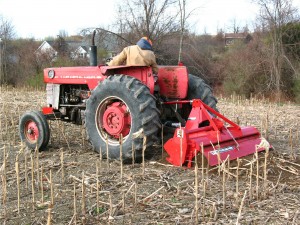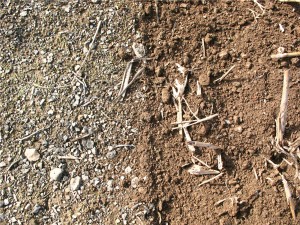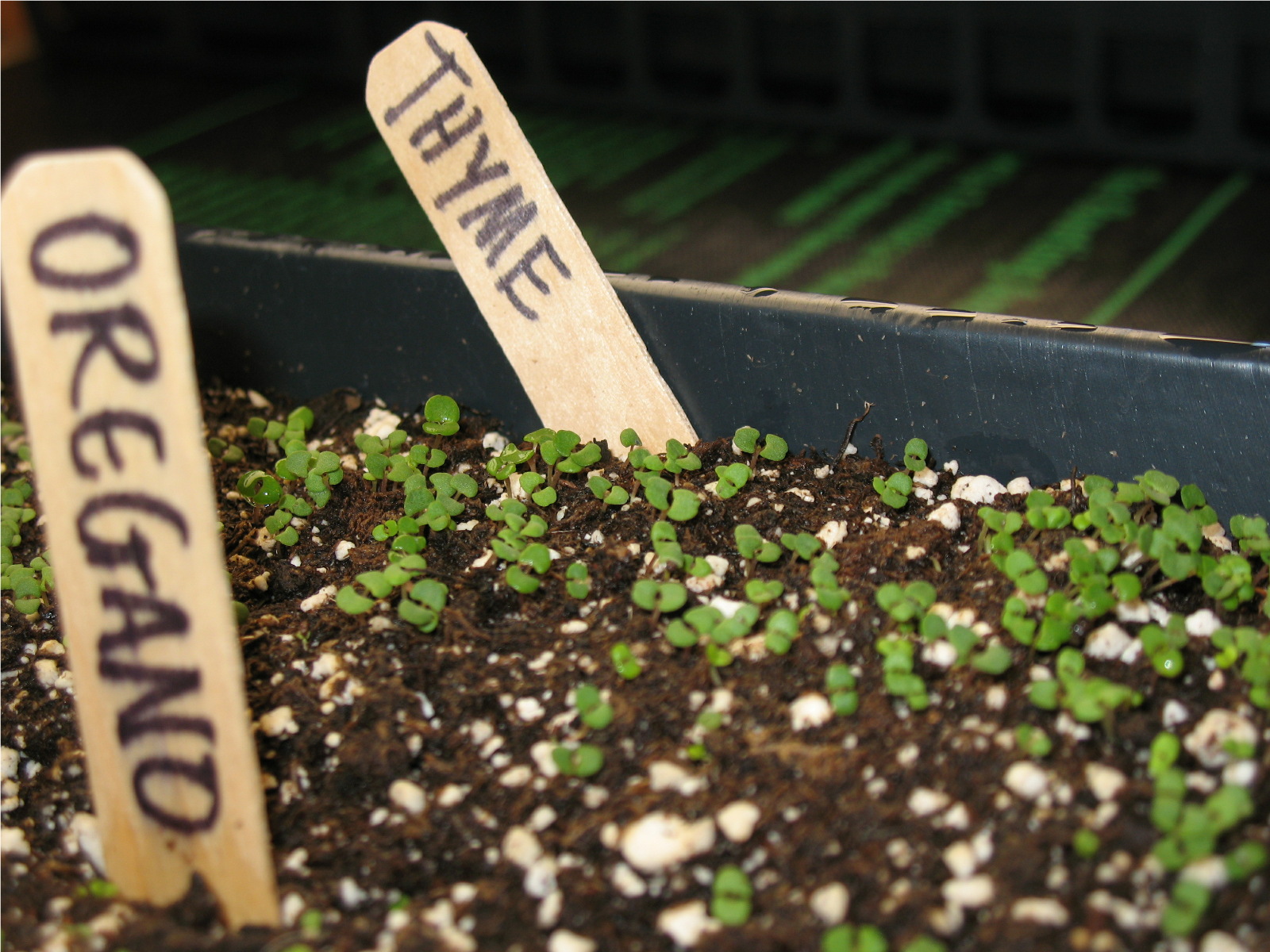Tillers and Peppers
/Big day on the farm...
 The tiller arrived, so now we are set to plant! Of course, *today's* weather is not quite so planting-encouraging as the last few weeks (so we are holding off for a few more days... not that 17 degrees in the air will chill that deeply into the ground).
The tiller arrived, so now we are set to plant! Of course, *today's* weather is not quite so planting-encouraging as the last few weeks (so we are holding off for a few more days... not that 17 degrees in the air will chill that deeply into the ground).
Here's Matt making the first pass on the right. There was definitely good news in that the tiller seemed to handle the soil and corn stubble fine (we were a little worried about that, since there's some pretty serious stubble, and the tiller, believe it or not, is actually a bit undersized for our tractor). But things worked up nice! On the bad news, however... there were certainly a few more ROCKS than we anticipated. Not that we can't handle rocks (we did come from NH), but we were hoping they were a thing of the past!!
 Here's a close up before/after of what one tiller pass looks like. Matt choose to try the tiller on one of the rougher areas of the field... it had been pretty compacted by previous field traffic (it's right by the entrance to the field).
Here's a close up before/after of what one tiller pass looks like. Matt choose to try the tiller on one of the rougher areas of the field... it had been pretty compacted by previous field traffic (it's right by the entrance to the field).
What you see on the left (before) side is soil that has a fair bit of wind erosion going on... not an uncommon thing on a windy site with some slope that's been in a pretty "clean" (read: weed-free) corn field for most of a year. What happens is the wind whips through exposed ground and removes the "fines" from the soil (all the little tiny parts), leaving the larger gravel pieces exposed on the surface. One of our main operational goals is to reverse the process. This is much easier in a diversified produce operation, than for folks growing corn. We will protect the surface fines by keeping the soil covered up more--either under plants with more leaf area than corn, or by cover crops (particularly in the windier off-season months). To build up the soil more, we ultimately hope to add composted manure. But until we have animals (or a source of local manure), we will focus on cover crops. This summer we will be using a mix of buckwheat, red and white clovers, and a range of grasses.
Other big news on the seed starting front (besides the fact that we are living overnights with something like a hundred flats in our house... we will appreciate getting our greenhouse up next week!): peppers are planted! We intensively seed them in open flats and then pop them on the heating pad at 85 degrees. We planted about 3000 plants this year, of a mix of hot, sweet, and unique varieties. Check out the varieties HERE.
Peppers (along with eggplants and tomatoes) really like an extra boost of heat in order to germinate. Since we have limited space for seedlings on our heat mat, we start one crop each week, and then rotate them off as they germinate. Peppers grow the slowest, so they get a head start (followed by eggplants and then tomatoes).
 It's been hard these past few weeks to control ourselves from planting more things early, but we have. Last night as the temperatures started to drop, we were glad we hadn't jumped too far ahead of ourselves! There is actually a crop warning for the next couple nights for our region for growers to protect things like trees that are prematurely blossoming.
It's been hard these past few weeks to control ourselves from planting more things early, but we have. Last night as the temperatures started to drop, we were glad we hadn't jumped too far ahead of ourselves! There is actually a crop warning for the next couple nights for our region for growers to protect things like trees that are prematurely blossoming.
One last pic before we go... herbs are germinating GREAT! In the past, they have been tricky for us (they each are particular in their needs), but this year, they are doing really well... even the rosemary and lavender (my two personal favorites)... can't wait for them to be in the CSA (and at the market)!


